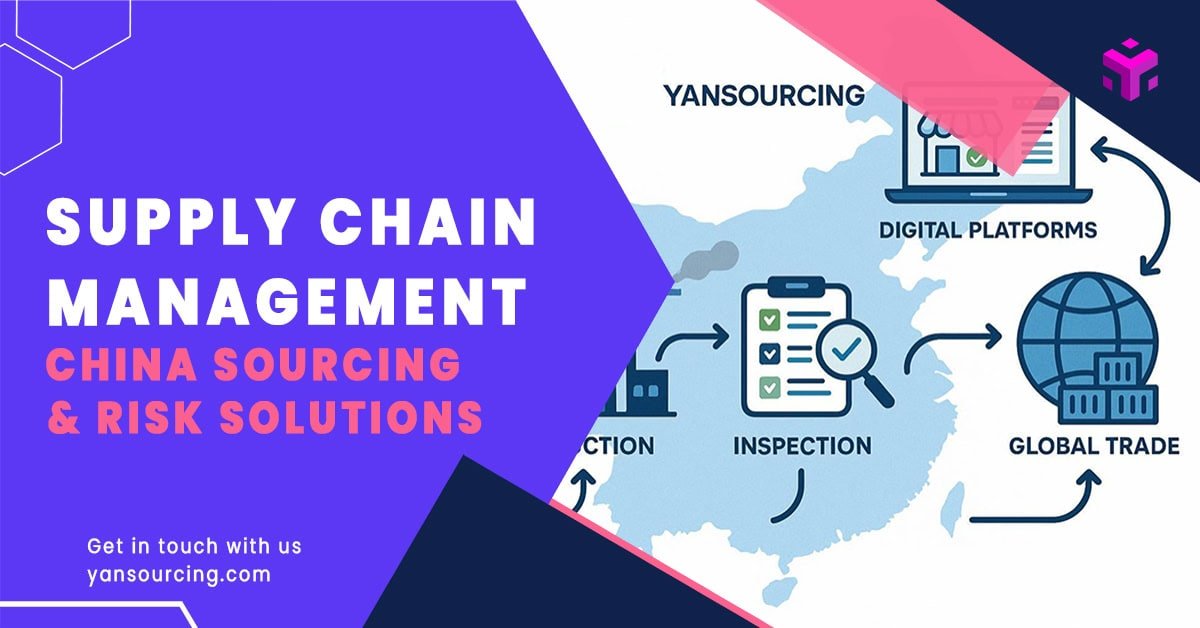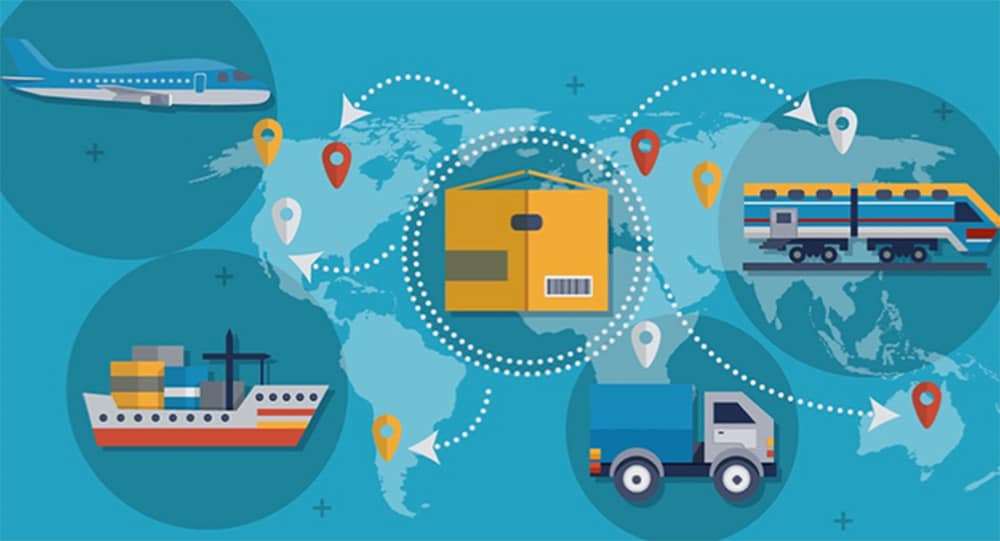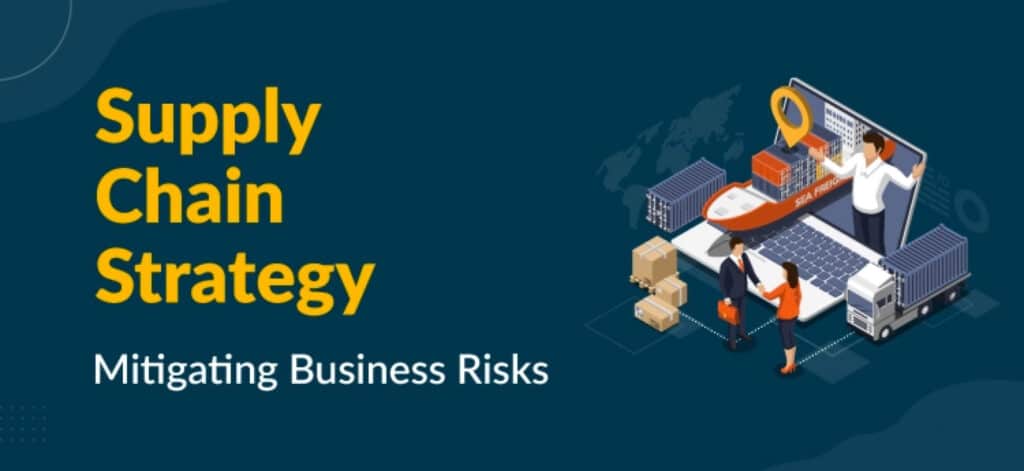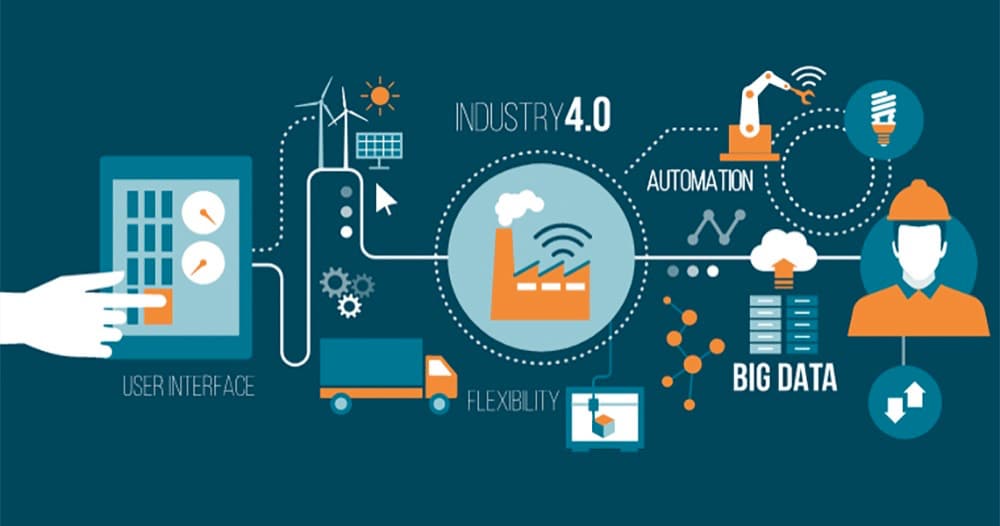
Supply chain management (SCM) has evolved from a back-office, operational function into a dynamic, strategic driver of global business success—especially for those sourcing from China and managing complex international networks.
What is Modern Supply Chain Management?
“Supply chain management is the integrated management of the flow of materials, information, and finances as they move from supplier to manufacturer to retailer to consumer—reducing waste, enhancing quality, and maintaining competitiveness.”
Why Does It Matter Now More Than Ever?
- Over 80% of global businesses experienced supply chain disruptions in 2024, driven by COVID aftershocks, geopolitical turmoil, and regulatory shifts.
- China remains the “factory of the world,” accounting for approximately 80% of global supply chain output, but rising compliance, quality, and risk concerns put new pressure on traditional sourcing models.
- Today’s supply chain leader must master transparency, risk mitigation, and data-driven optimization—while remaining agile in an era of digital transformation and regulatory scrutiny.
Yansourcing Perspective
With 10+ years of hands-on experience helping global companies—from first-time importers to enterprise supply chain leaders—Yansourcing has witnessed and enabled the state-of-the-art evolution of SCM, particularly with China as the sourcing hub.
Our mission: empower clients to skip old pitfalls, maximize value, and thrive with confidence.
Critical Challenges in China and Global Sourcing

While the core principles of SCM are universal, international (and especially China-based) supply chains face unique, high-impact challenges:
Supplier Reliability and Vetting
Frequent, Costly Mistake: Inadequate supplier due diligence leads to poor quality communication breakdowns, and sometimes outright fraud.
- Only ~45% of new suppliers sourced online in China pass comprehensive background and compliance checks
- Common oversights: Relying solely on online directories, skipping site audits, neglecting to check for legal/IP risk
Communication, Culture, and Compliance
- Language, time zones, and cultural misunderstandings cause specifications and quality gaps.
- Regulatory requirements (e.g., forced labor, ESG, environmental) now impact both product design and import/export eligibility.
Production Quality Control
- Many businesses skip continuous in-process inspections, risking rejects, delays, and reputational damage.
- The cost of a single overseas product recall can be catastrophic for SMEs.
Logistics Complexity & Payment Risks
- International shipping faces price volatility, customs risks, and frequent delays.
- Unprotected payment channels (or insufficient contract terms) expose buyers to loss.
Geopolitical and Market Shifts
- US/EU–China policy and COVID variants continue to disrupt routes, costs, and compliance expectations.
Yansourcing Field Insight:
The most expensive problems start with shortcuts—unverified suppliers, vague contracts, loose quality checks, and “cheap” logistics. A robust, end-to-end process is the only defense.
Strategic Frameworks for SCM Success: A Step-by-Step Playbook

The Modern SCM Flow (Adapted from SCOR)
Plan → Source → Make → Deliver → Return
But in practice, successful China/international sourcing demands additional layers:
- Supplier Screening & Verification (beyond approval)
- Detailed Contract & Payment Safeguards
- In-Process QC and Final Inspection
- Integrated Logistics and Customs Prep
The Yansourcing Proven Process (From Quote to Delivery)
Step 1: Needs Analysis & Sourcing Strategy
- Define product specs, compliance needs, target price, and ideal supplier profile
- Download: Product Sourcing Requirements Checklist
Step 2: Supplier Identification & Vetting
- Online screening, license checks, third-party background reports
- Full site audits and reference checks (in-person or via trusted agent)
- Review legal/IP standing and third-party compliance registrations
- Yansourcing’s audited supplier approval rate: 43% (2024), ensuring only the best progress
Step 3: Contracting and Payment Structure
- NNN (Non-disclosure, Non-use, Non-circumvention) agreements, sample terms
- Milestone payment schedules tied to QC
- Clear definition of product, packaging, IP, and aftersales support
- Download: Editable NNN Contract Template
Step 4: Production Oversight & Quality Control
- Pre-production samples, first article checks, in-line and pre-shipment inspections
- Digital photo/video documentation of all critical stages
- Yansourcing data: clients saw defective goods rates drop by up to 70% after full-process QC
Step 5: Logistics Management & Customs
- Optimize for timing, rates, and regulatory requirements (incoterms, duties, certifications)
- Real-time updates and problem resolution (delays, damages, paperwork)
Step 6: Delivery, Evaluation, and Continuous Improvement
- Post-delivery inspection, feedback capture, and looped process refinement
- Request: SCM Post-delivery Audit Template
Transformation Stories: Before & After with Yansourcing

E-commerce Seller: From Delays to High-Growth Supply Chain
Before: An Amazon seller faced months of unpredictable lead times, inconsistent product batches, and confusion between multiple “agents”.
Yansourcing Actions:
- End-to-end supplier vetting, NNN contract lock-in, weekly production video updates, multi-stage QC
- Streamlined logistics coordination from China warehouse to US FBA centers
After:
- On-time delivery rate rose from 74% → 98%
- Customer returns on new SKUs dropped >60%
- Seller expanded successfully to 3 new markets in <1 year
Startup Brand: Risky Sourcing to Peace of Mind
Before: Startup attempted direct-to-factory orders; lost on poor supplier communication and IP leak risk.
Yansourcing Actions:
- Supplier and legal IP background check, NNN contract implementation
- In-person agent handle and video-documented pre-shipment inspection
After:
- No further IP issues; QC complaints fell 70%
- Confidence to launch additional SKUs
SME Manufacturer: High Rework Costs Slashed
Before: High defect rates and costly reruns of private label electronics.
Yansourcing Actions:
- On-site quality control plan, milestone-triggered payments
- Batch-by-batch feedback loops
After:
- Rework costs cut by $40,000+ per quarter
- Defect rate slashed by over two-thirds
Ensuring Quality & Mitigating Risk: Toolkits for Resilience

Supplier Verification and Audit Checklists
- Multi-tier audit: online, documentation, in-person—and never skip at least one physical (or video) inspection
- Downloadable Tools:
Quality Control & Inspection Protocols
- Stepwise checklist for every stage: Pre-production, in-line, pre-shipment
- QC findings tracker and image log
- Downloadable Tools:
Contract & Payment Risk Mitigation
- Always use NNN agreement for China (not just NDA)
- Tie payments to inspection and sample sign-off
- Downloadable Tools:
Compliance & ESG
- Stay current on labor/environment regs per country of record—failure means border block!
- Leverage sources like US CBP and EU Due Diligence Law
Full-Spectrum Downloadable Toolkit
Access Yansourcing’s Ultimate SCM Toolkit—free checklists, audit templates, contract samples, and more.
Digital Solutions & Future Trends in SCM

The Rise of Data-Driven, Automated Supply Chains
- 35%+ of businesses in 2024 now use AI or digital platforms to automate procurement, quality tracking, and logistics (APQC/Oracle survey 2025)
- Key tools: Real-time tracking SRM systems, workflow automation, supplier risk dashboards
Integration of Agent + Digital
- Hybrid models (Yansourcing) deliver both on-the-ground verification and online process transparency
- Digital photo, video, and database logs for every critical step
What’s Next?
- Multi-shoring (China + SE Asia) to reduce risk
- Blockchain/traceability tech for anti-fraud and compliance audits
- Smart contracts for safer, automated payments
For the practical leader, success will hinge on blending new technology with expert, hands-on management—often via a trusted supply chain partner.
Resources & Next Steps: Actionable Downloads and Consultation
Downloadable Checklists & Toolkits
- Supplier Verification Checklist
- Factory Audit Template
- Production QC Checklist
- Editable NNN Contract Template
- Ultimate SCM Toolkit (All-in-One)
Get a Personalized SCM Strategy Session
Ready to optimize your sourcing, quality, and risk control in China or globally?
Book a free 1-on-1 consultation with a Yansourcing supply chain expert:
- Request Your Consultation
- Discuss your challenges and get a tailored action plan
FAQs
1. What is modern supply chain management?
It’s the coordinated control of materials, information, and finances from supplier to customer—focusing on efficiency, quality, and competitiveness.
2. Why is SCM more important now?
Disruptions, compliance demands, and rising risks mean businesses must be more agile, transparent, and data-driven than ever.
3. What are the biggest sourcing challenges in China?
Supplier reliability, communication gaps, quality control, logistics risks, and geopolitical shifts.
4. How does Yansourcing help reduce risk?
Through vetted suppliers, strong contracts, in-process quality checks, and end-to-end logistics coordination.
5. What tools can improve SCM resilience?
Supplier audit checklists, QC protocols, NNN contracts, compliance trackers, and digital monitoring systems.
